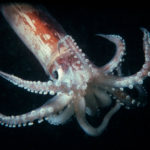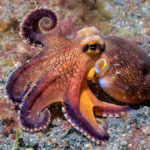Paper, Biological versus electronic adaptive coloration: how can one inform the other?
Scientists at the University of Cincinnati recently found inspiration from a group of marine animals known as cephalopods (squid, octopus, cuttlefish, nautilus, etc.). Cephalopods have the amazing ability to hide from predators by changing colors in a matter of seconds, and researchers at UC used their knowledge about the color-shifting abilities of cephalopods to improve the technology behind adaptive reflective surfaces on e-readers such as Kindle. They found that, using color transposition, colors can change by expanding or contracting the pigments. Through cephalopods, scientists have been able to improve the coloring of the e-readers that we use on a daily basis!
Learn about our two Decals!
 Click here to find out more about our Fall Bioinspired Design Decal and our Spring Bioinspired Design in Action Decal – ALL MAJORS are welcome.
Click here to find out more about our Fall Bioinspired Design Decal and our Spring Bioinspired Design in Action Decal – ALL MAJORS are welcome.Berkeley BioDesign Community
 Click here to learn about the BioD: Bio-Inspired Design @ Berkeley student organization or here to signup for more info.
Click here to learn about the BioD: Bio-Inspired Design @ Berkeley student organization or here to signup for more info.Search
Student Login






I imagine that the neurological circuits underlying these processes are governed by both 2d spacing maps with their brains as…
to reduce the impact of car accidents, it may be possible to study the force diverting physics of cockroaches to…
you see this type of head-bobbing stability in many avian creatures related to pigeons like chickens. the head ability to…
not like they taught horses how to run! this is an example of convergent evolution where both sea creatures and…
The brain functions in a similar way with neuronal connections. our brains are able to utilize the multiplicity of connections…